- Home
- News
- Students research cars in our collection before redesigning them for the year 2050
Students research cars in our collection before redesigning them for the year 2050
05 November 2020
Students from Coventry University visited us pre-lockdown to research cars in our collection before redesigning them for the year 2050.
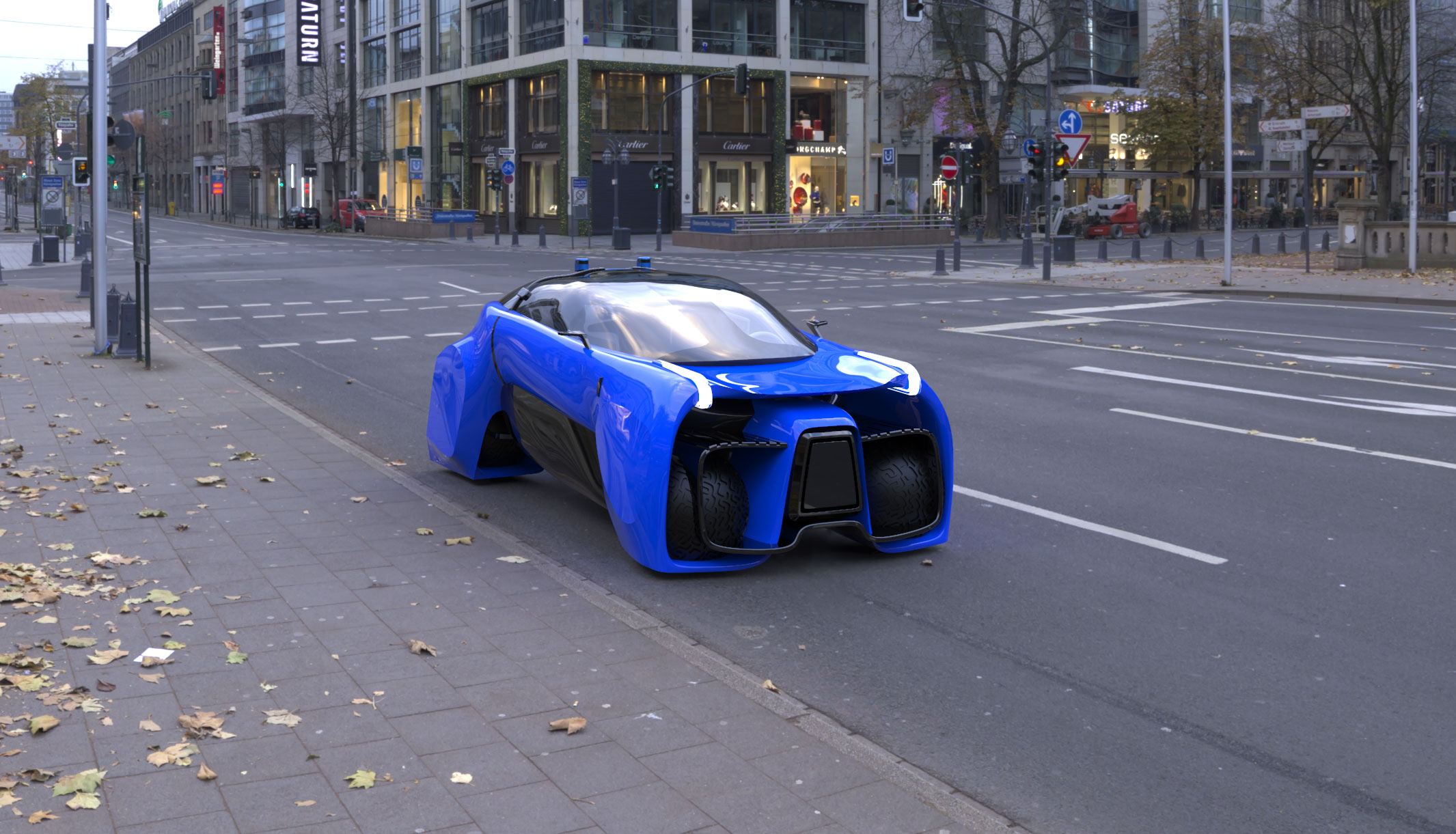
Intro to Project
Dr. Aysar Ghassan, Course Director, MA Automotive & Transport Design, Coventry University
At the start of 2020, students on Coventry University’s MA in Automotive and Transport Design began collaborating with Coventry Transport Museum on a fascinating project. Students were asked to choose one vehicle from the museum’s collection to reinterpret for the year 2050. Students learnt more about the vehicles on a tour of the museum and sketched ones that inspired them. This process gave them a really good appreciation of brand, proportions, surfacing and product detailing. Students then began the design phase, sketching a range of proposals before deciding on their chosen direction. The lockdown meant that students had to work remotely towards the end of the project. They remained resolute and delivered excellent, original and thought provoking reinterpretations of their chosen vehicle. This article features the thought process and work of just 3 students.
‘Austin Type H 2050’
Elsa St-Claire
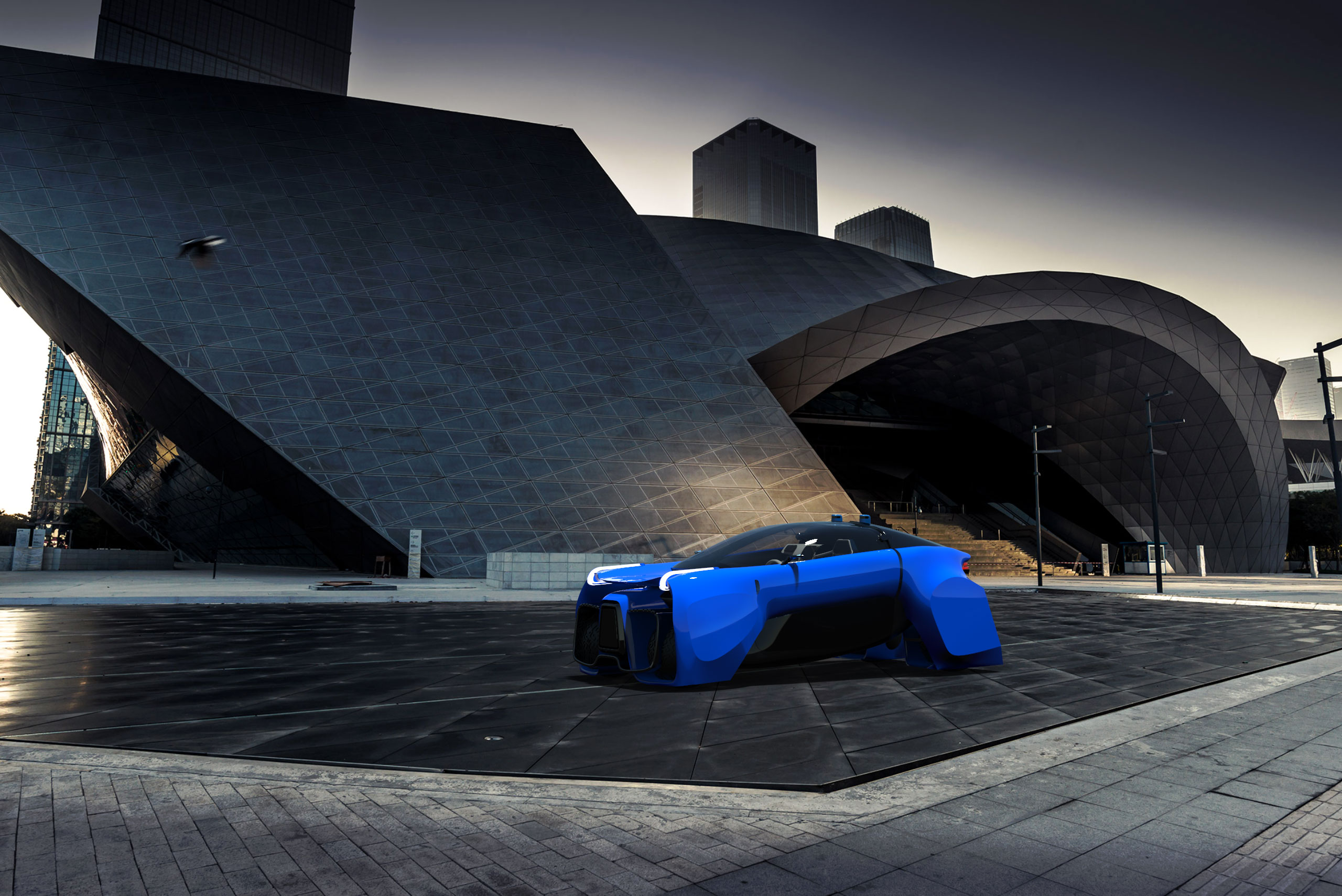
.jpg)
When I walked into the museum, I immediately appreciated the 1931 Austin 7 "Swallow". I was struck by the toy-ish look of this car. I thought the rounded shape of the rear end was very original and playful! Plus, its small size made it affordable and provided a cheaper vehicle for people, but with a luxury look and feeling. The Austin 7, has become one the most iconic British car and was perfect for denoting the Britishness in this project.
In my design strategy, I was inspired by two key elements—the swallow bird and the nautical world that is important in the British culture and history. The outcome was a hydrogen-powered vehicle with a fully transparent cockpit. The deep clear, digital glass gives the passengers a sensation of freedom while travelling, and it is also fully customizable.
During this project, I learnt a lot about the history of the car industry in Great Britain, and I discovered how to use small details to rethink the entire identity of a classic car.
‘Jaguar Mark 2 2050’’
Ziming Chang
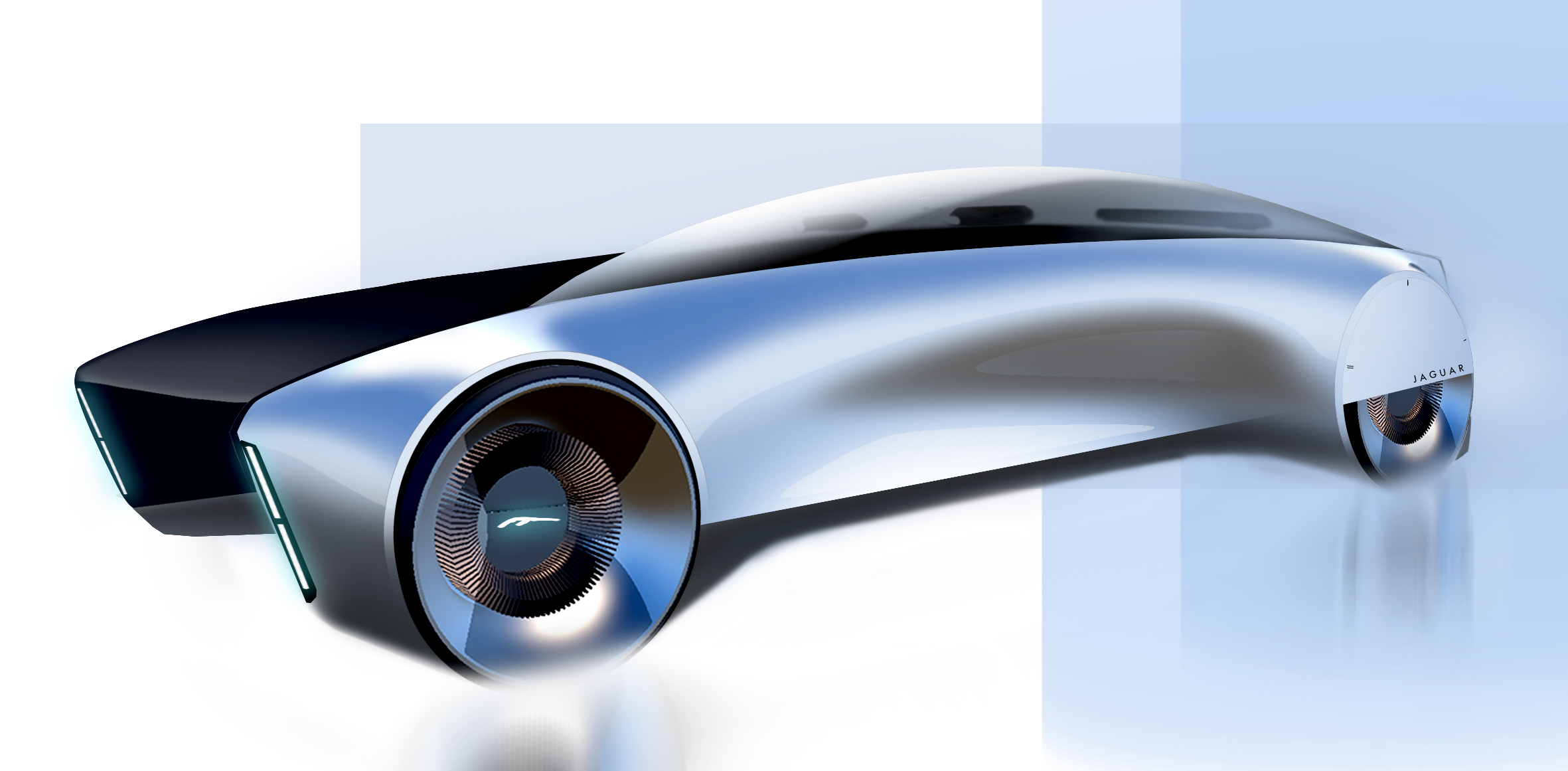
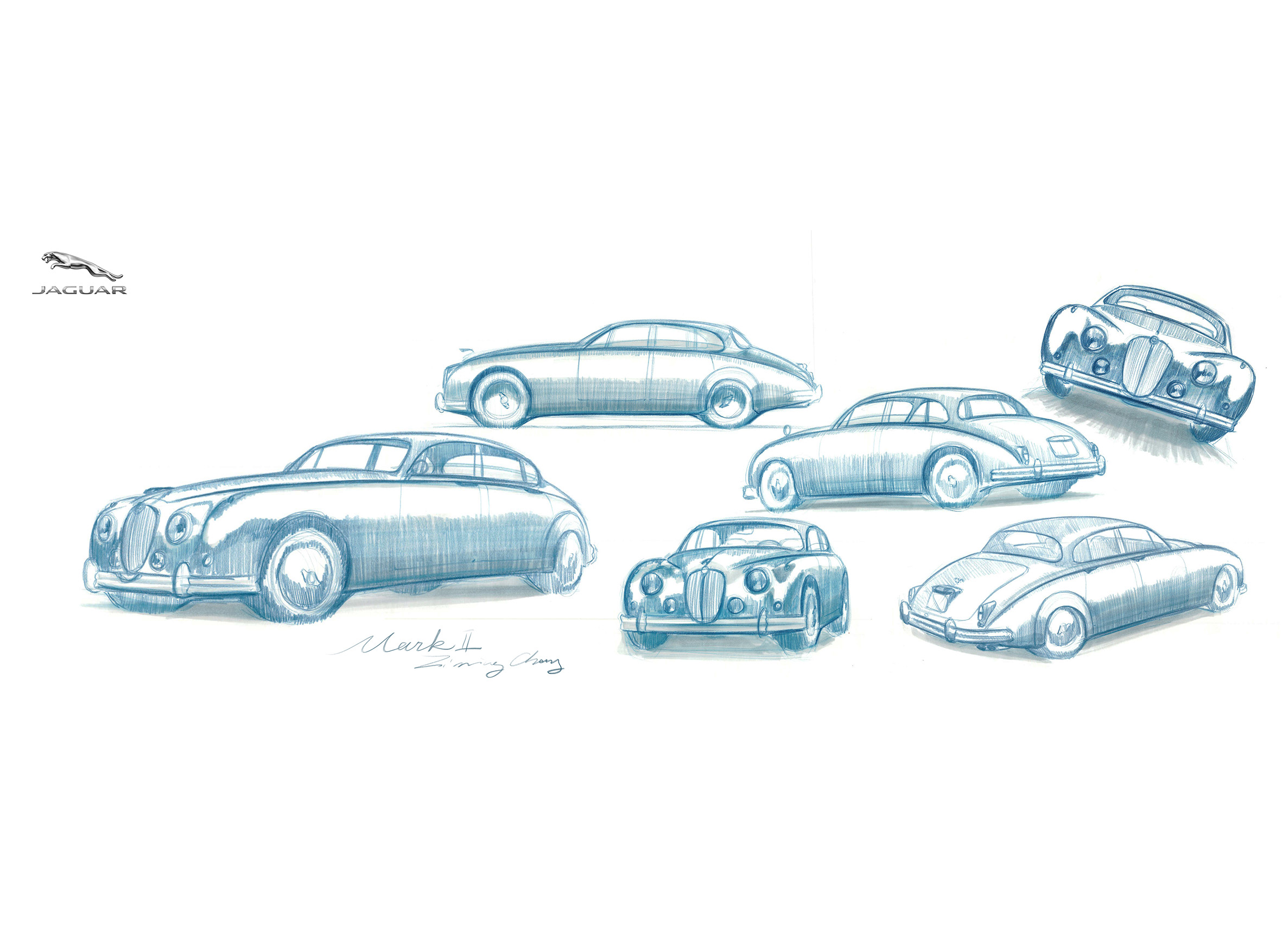
I chose to reinterpret the Jaguar Mk because he wanted to focus on Jaguar’s luxury design language. The Mark 2’s slogan ‘speed, space and elegance’ conveys Jaguar's mastery of British luxury automotive design.
When it came to reinterpreting the car, I aimed to create a wholly new design philosophy for 2050. Replacing the old slogan, the keywords for the re-interpretation are ‘clean, efficient and advanced’. The reinterpretation is an electric, highly automated luxurious four-seater. I retained a luxurious interior, while creating a futuristic exterior form language.
I leant a great deal during the project, such as the importance of preliminary research and project management. It was a challenging project, but when I completed it, I found myself benefiting a lot. The project was a turning point in my understanding of design.
‘Tramo’
Stefan Perriard
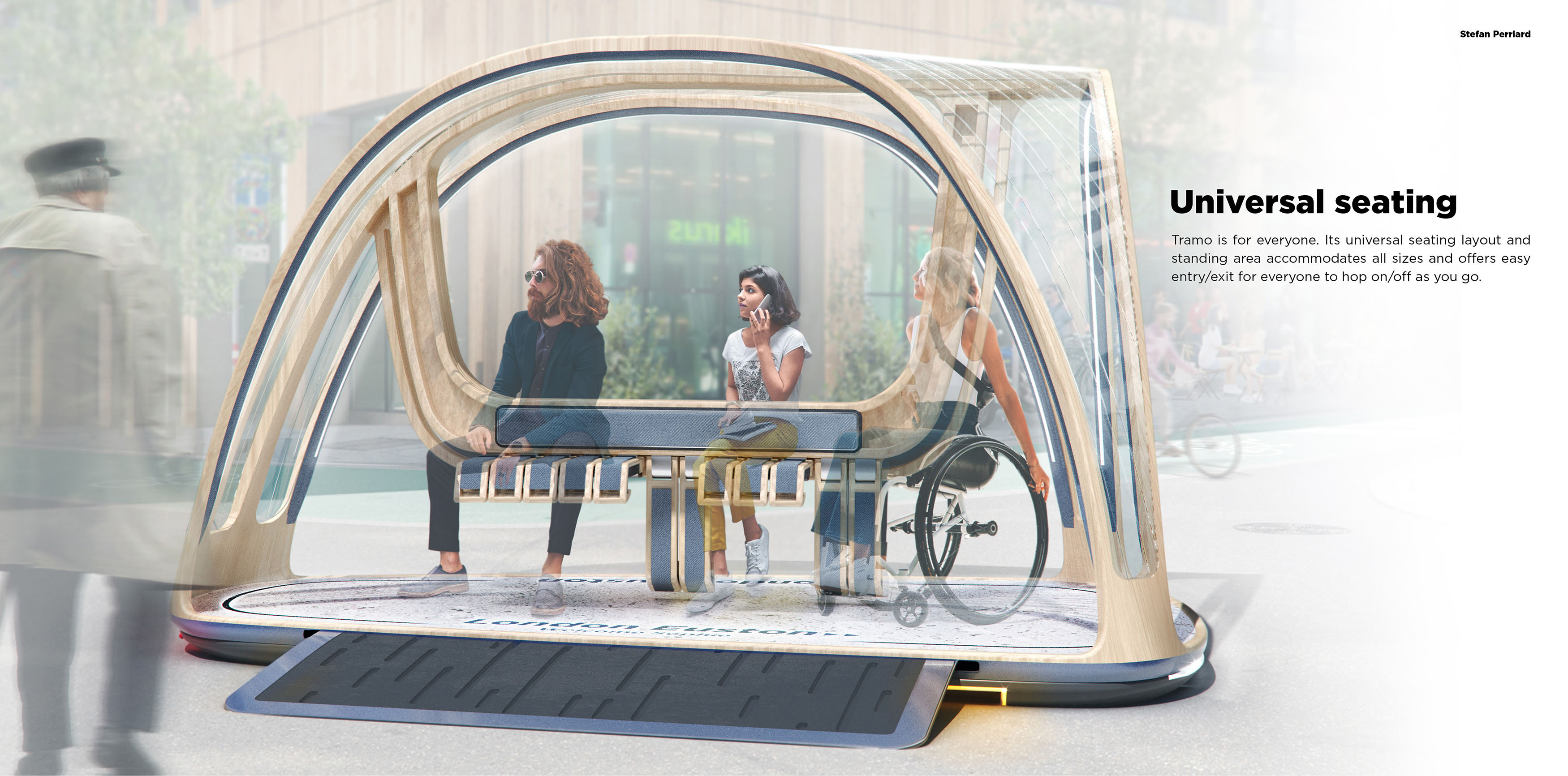
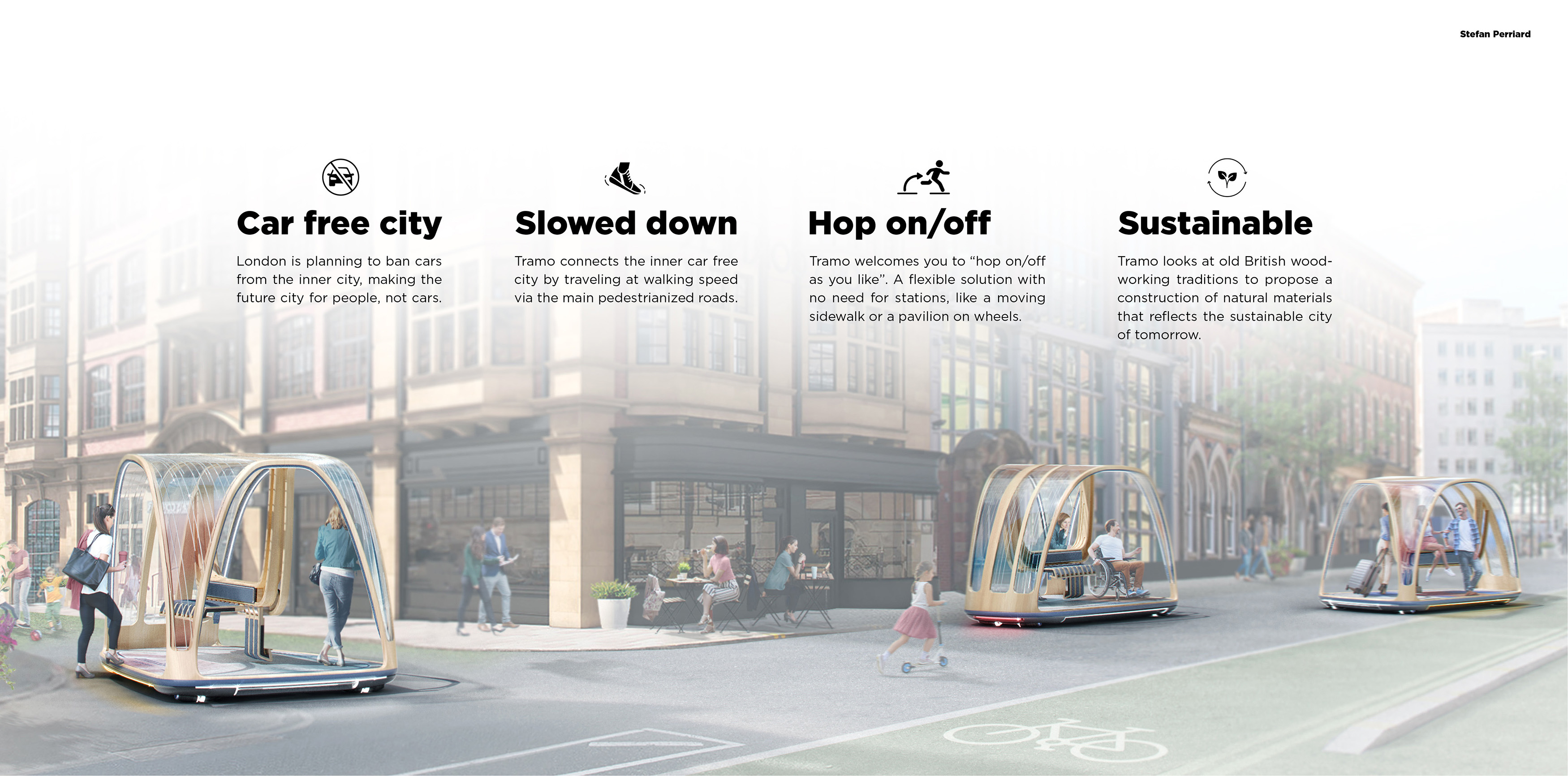
I was inspired by the 1929 Fullham Standard 9, it has a laminate wooden construction and a fabric skin. My design strategy looked at Zaha Hadid’s study on how to pedestrianize central London - making a future city for people, not cars.
Tramo travels autonomously at walking speed through pedestrianized roads, connecting people within the city, or taking them to public transportation junctions. Tramo welcomes you to “hop on/off as you like”. A flexible solution with no need for stations, like a moving sidewalk.
Tramo welcomes everyone onboard, its universal seating layout and standing area accommodates all sizes and offers easy entry/exit for everyone to hop on/off as desired.
The UK has a strong heritage of woodworking and has a lot of knowledge on using natural materials and producing designs which can easily be disassembled and recycled. Cars of the future do not have to be metal boxes. Tramo shows the potential of using carbon neutral material for a sustainable future.